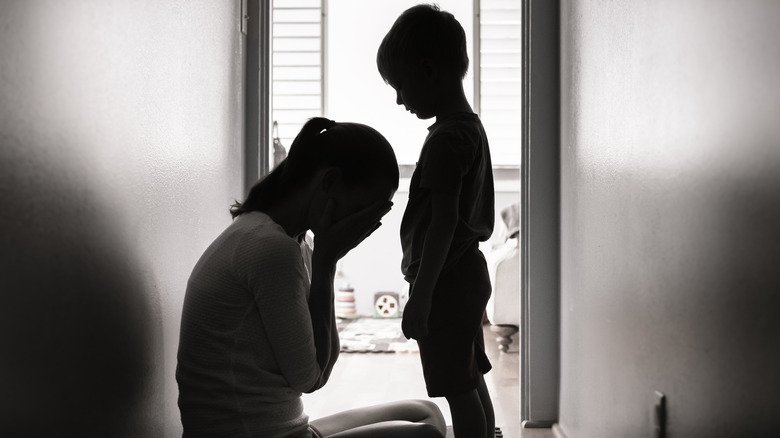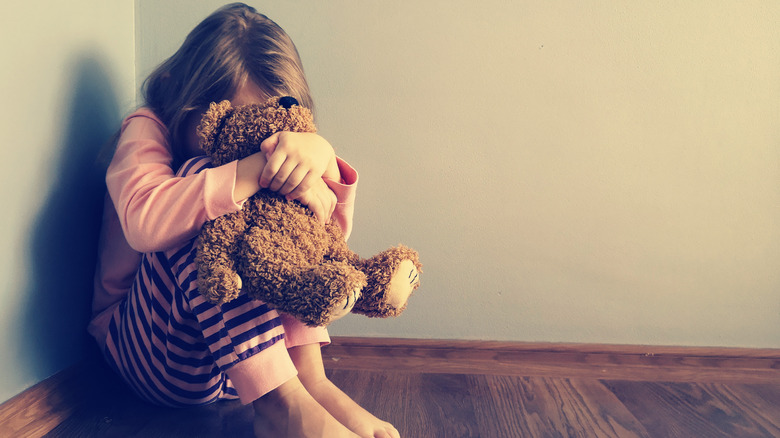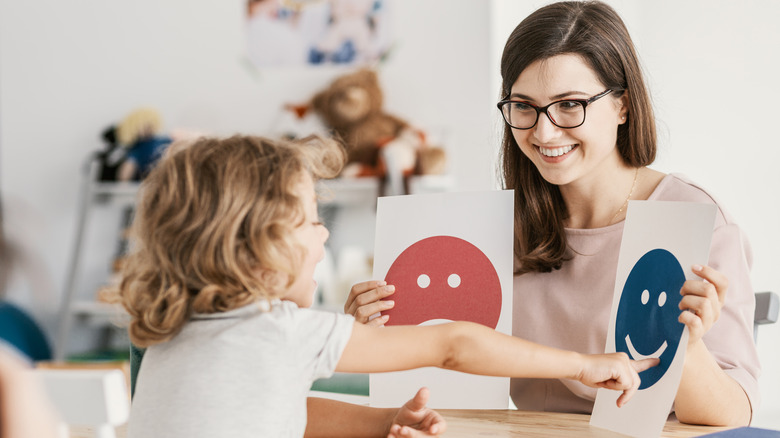What It Really Means When You Have Separation Anxiety Disorder
People tend to use the term "separation anxiety" very loosely. In reality, though, separation anxiety isn't just what you feel when you miss someone. It's a real disorder that affects many children and even some adults (via Medical News Today). In fact, while separation anxiety disorder is most common in children between the ages of seven and 11 years old (via WebMD), teenagers and adults are not immune to this diagnosis.
You probably have a good idea of what separation anxiety is, but just because someone feels uneasy when they're separated from a loved one doesn't mean that they have separation anxiety disorder. As is true with other types of anxiety, it's normal to feel anxious sometimes, but there are certain signs that indicate that you have an anxiety disorder, and this might mean that your anxiety is chronic and can even be debilitating (via National Institute of Mental Health). If you or a loved one is dealing with separation anxiety, it's important to know what is a common, healthy response and what may be a sign of separation anxiety disorder.
Symptoms of separation anxiety disorder
When it comes to children experiencing separation anxiety, this is neither uncommon nor is it usually cause for concern (via WebMD). What makes this common occurrence a disorder is all about how long it lasts. When a fear of being separated from a loved one lasts for longer than a month, it's more likely to be separation anxiety disorder. It's also more prominent in a child who is older than six years old.
Children with separation anxiety disorder may experience physical symptoms when they are separated from the person they're attached to, like wetting the bed, having stomach aches or headaches, or even debilitating worry. This often stems from concern that either their caregiver will be in danger if they are separated, or they will. The child may experience nightmares and act out or avoid being separated from their caregiver to go to school or to sleep.
As for adults with this diagnosis, many of the emotional symptoms are the same as what is seen in children (via Medical News Today). Adults may also notice physical symptoms when they are away from the person they're attached to or when they know that they will be.
How to treat separation anxiety disorder
Luckily, there are plenty of ways to cope with anxiety, and separation anxiety disorder is no exception. Therapy is always an important step when looking to obtain or get treatment for a mental health diagnosis. Cognitive behavioral therapy can be a great choice for kids and adults with this diagnosis (via WebMD). It can also be positive to seek out family or couples therapy depending on the dynamic between the person with the diagnosis and the person they're attached to. This will help to address aspects of the dynamic that may be fueling this and assure that the person with separation anxiety has the best support from their partner or caregiver.
Through therapy, it will become clear whether or not trying medications would be a benefit. This is different for everyone, and what medication works for one person's anxiety may not work for another, so sometimes it's helpful to shop around (via Medical News Today). While it isn't uncommon for symptoms of social anxiety to resurface at specific parts in a person's life, therapy and medication can be extremely helpful toward eradicating social anxiety disorder symptoms and leading to a more peaceful and healthier life.


